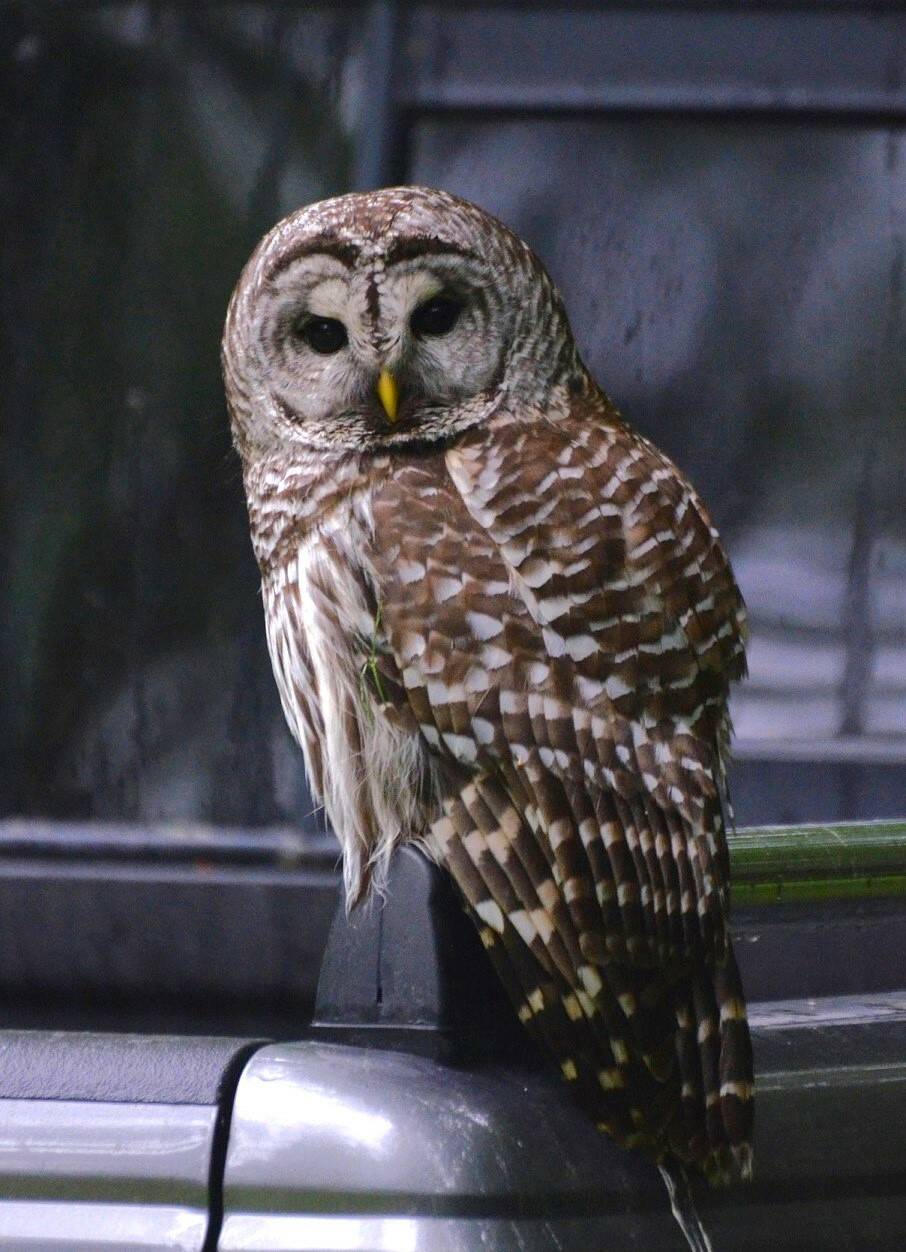To the average person, barred owls and northern spotted owls are nearly identical. Both are mid-sized, dark-eyed owls with brown and white specks. There are a few major differences between the two species: the barred owl is commonly seen in trees during daytime and has wiped the northern spotted owl from Whidbey Island entirely.
In response to the northern spotted owl’s decline across Washington, the U.S. Fish and Wildlife Service developed a controversial proposal to cull nearly half a million barred owls across the state over the next 30 years. Following the public comment deadline of Jan. 16, the department is now in the process of finalizing an environmental impact survey.
Barred owls are native east of the Great Plains and south of the U.S.-Canada border. European settlement, fire suppression, bison and beaver extirpation and deer and elk overharvest grew forest habitat, allowing the barred owl’s western expansion. The first one was documented in Western Washington in 1972.
Northern spotted owls, native to the Pacific Northwest, have seen an 80% decline in range in the past two decades as a direct result of human and barred owl expansion. Northern spotted owls found their way on the Washington Department of Fish and Wildlife’s endangered list in 1988, and in 1990 were listed as threatened under the Endangered Species Act. According to state Fish and Wildlife, at this rate within 10 years northern spotted owl numbers may decline so low they will no longer play an active role in the ecosystem.
Barred owls and northern spotted owls fit different ecological niches. Allowing the non-native barred owl to dominate the native northern spotted owl does not result in an equal ecological impact.
There have been only two credible sightings of northern spotted owls on Whidbey Island in the last 35 years, said Steven Ellis, former president of the Whidbey Audubon Society, whereas the barred owl population is second only to the great horned owl.
Barred owls have also eliminated western screech owls and reduced the number of northern saw-whet owls, Ellis said. On top of that, they’ve devastated the populations of northwestern salamanders and red-legged frogs, among others.
“Once those species are gone, they will be gone for good,” he said. “It remains to be seen what will happen to the wetlands when those top predators are removed.”
Is lethal removal of barred owls necessary when human development is at least half the problem? According to Marnie Jackson, executive director of the Whidbey Environmental Action Network, it isn’t.
“Generally, when humans attempt to rectify an ecological issue caused by human activity the consequences are often unpredictable and often unintended,” she said. “When it comes to culling owls in order to ensure the spotted owls, it’s my opinion that would be far less effective than simply safeguarding every remaining mature forest so that that habitat can endure and support generations of animals to come.”
Jackson advises revising stewardships of publicly owned land instead of killing owls.
The Northwest Forest Plan, a multi-agency strategy starting in 1994 to resolve debates over endangered species in federal forests, addressed habitat loss on federal lands. Conservation plans and safe harbor agreements have been made for some state and private lands, which have reduced the loss of spotted owl habitats from timber harvest in those areas, said Amanda Smith, U.S. Fish and Wildlife Service public affairs officer. That said, these do not protect against severe, large-scale wildfires which have also wiped out their range. Part of the northern spotted owl recovery plan includes fire-prone forest management.
Protecting northern spotted owl habitat will only be so effective, Smith said. Barred owls, as a larger, more aggressive species, have a wider prey base and displace northern spotted owls, disrupt their nesting, compete with them for food and attack them. Northern spotted owls are not able to thrive in the preserved habitat when barred owls are displacing them.
According to Ellis, reducing barred owls may not help either.
“Barred owls are popular with people because they are out during the day whereas great horned owls usually wait until nightfall,” he said. “My feeling is that the culling of barred should have been done 20 years ago, and it’s probably too late to fix the spotted owl problem.”
A final decision for the northern spotted owl recovery plan will be made in July.



